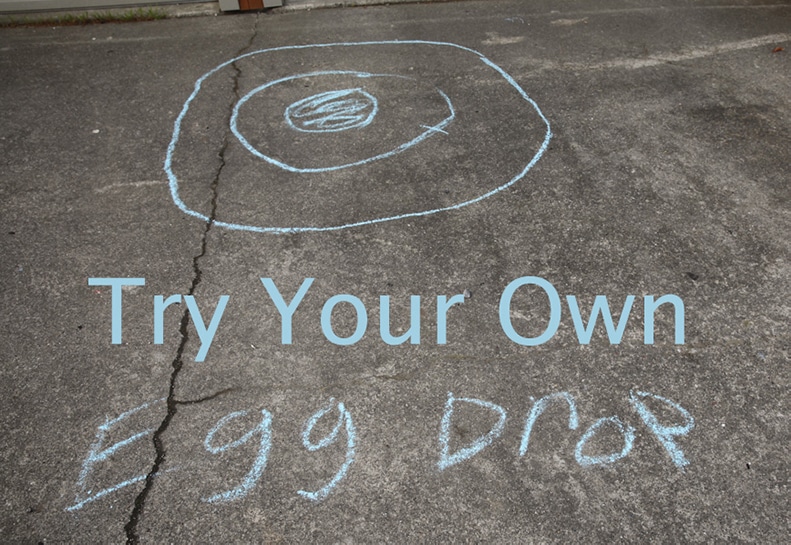There is nothing like adding an element of danger to get kids excited about physics. The goal is simple: an egg surviving a drop without cracking. The challenge is in developing a device that will help the egg survive better than when Humpty Dumpty took his historic fall off the wall. It’s time to break out the Galileo Innovation Approach and get Newtonian with it.
Supplies:
- One egg per person
- The challenge can be open, with supplies open to any available or it can be limited with only boxes, bags, paper, marshmallows, etc. (Our restriction was nothing motorized.)
How to:

Step one: Ask kids to think about the egg drop process, from the height the egg will be dropped, to motion, velocity, momentum, deceleration, and force. If the egg is moving fast, how will the design help slow the fall or cushion the impact?
Step two: Start drawing. Sketch out ideas from the wild to the simple.
Step three: Build! We ended up with three designs: 1. a cylinder of foam tightly around the egg with a small bubble wrap parachute; 2. a small box filled with foam around the egg and a plastic bag parachute; and 3. a repurposed thin box filled with marshmallows and Peeps surrounding the egg. The third design had no mechanism to slow acceleration and was considering the most risky.

Step four: Test! Our test didn’t involve a drop. We held and shook the devices a little to feel for rattling and to check security. Check to see how parachutes will open or if attachments are securely affixed.
Step five: Drop! Our drop was from about 15 feet up.
Step six: Results!
They all survived! The marshmallows in the box without a parachute were dented and bent from absorbing the collision, but the egg was secure. The parachute devices looked just like they did before being dropped.
Final step: Celebratory scrambled eggs!

Can’t get enough hands-on and DIY? Join us for a week (or more) at Camp Galileo (Pre-K – 5th grade) or Galileo Summer Quest (5th – 8th grade). Ready to enroll? Find a location in your neighborhood today.




